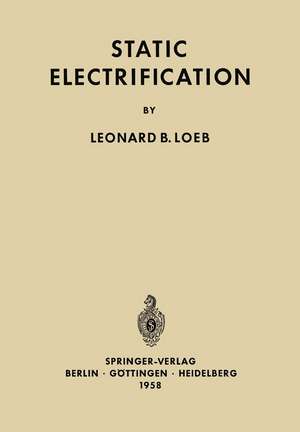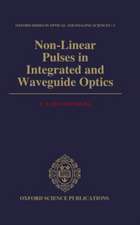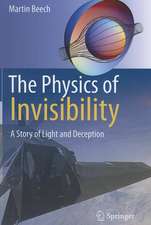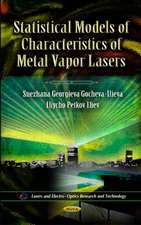Static Electrification
Autor L.B. Loeben Limba Engleză Paperback – 29 apr 2012
Preț: 387.96 lei
Nou
Puncte Express: 582
Preț estimativ în valută:
74.25€ • 77.23$ • 61.29£
74.25€ • 77.23$ • 61.29£
Carte tipărită la comandă
Livrare economică 14-28 aprilie
Preluare comenzi: 021 569.72.76
Specificații
ISBN-13: 9783642882456
ISBN-10: 3642882455
Pagini: 256
Ilustrații: XII, 240 p. 20 illus.
Dimensiuni: 170 x 244 x 20 mm
Greutate: 0.41 kg
Ediția:Softcover reprint of the original 1st ed. 1958
Editura: Springer Berlin, Heidelberg
Colecția Springer
Locul publicării:Berlin, Heidelberg, Germany
ISBN-10: 3642882455
Pagini: 256
Ilustrații: XII, 240 p. 20 illus.
Dimensiuni: 170 x 244 x 20 mm
Greutate: 0.41 kg
Ediția:Softcover reprint of the original 1st ed. 1958
Editura: Springer Berlin, Heidelberg
Colecția Springer
Locul publicării:Berlin, Heidelberg, Germany
Public țintă
ResearchCuprins
I. Static electrification by electrolytic process.- A. Basic principles in terms of galvanic action from metal surfaces.- B. Nature of systems leading to charge separation and their limitations.- C. Do adequate aqueous surface films exist for electrolytic charging ?.- D. Past evidence of electrolytic charging.- E. Electrical endosmosis, streaming potentials, and cataphoresis (Verified aspects of electrolytic charging).- F. The more accurate calculation of the double layer characteristics including ions of both signs.- G. The Workman-Reynolds freezing potential.- H. Summary and conclusions.- II. The contact potential difference or volta potential.- A. Introduction.- B. The metallic state energy bands, the Fermi law and basic principles.- C. Surface structure and the work function in relation to the Fermi level.- D. Influences modifying the work function.- E. The contact potential difference.- F. The measurement of contact potential and/or work function.- G. Discussion and conclusion.- III. Static charging by spray electrification.- A. Introduction.- B. The Existence of an electrical double layer at gas-liquid interfaces.- C. Relative potentials in double layers of water in relation to surface tension, for salt, acid and organic solutes.- D. The spray electrification phenomena.- E. Spray electrification of water in relation to thunderstorm electrification.- F. Homogeneous or symmetrical charging of liquid droplets on dispersion.- G. Asymmetric charge distribution of droplets of micron size from bursting of small air bubbles in concentrated solutions.- H. Conclusions.- IV. Mechanisms of electrification on solid-solid contact.- A. Introduction.- B. Quantitative measuring techniques and the influence of electrical fields.- C. Initial investigation of controlled contact electrification of metal-inorganic insulator systems.- D. Electrification of dusts on dispersion and impact on surfaces.- E. The contact charging by rolling of inorganic insulator spheres on metal surfaces.- F. Extension of Peterson’s investigations by Wagner.- G. Contact charging of ice on ice.- H. Other possible charge transfer mechanisms.- V. The generation of static charges by processes involving ionization of gases and miscellaneous other matters.- A. Introduction.- B. Various gaseous electronic mechanisms.- C. Static elimination.- D. Thunderstorm electrification.- E. Protection against lightning stroke.- Author Index.















